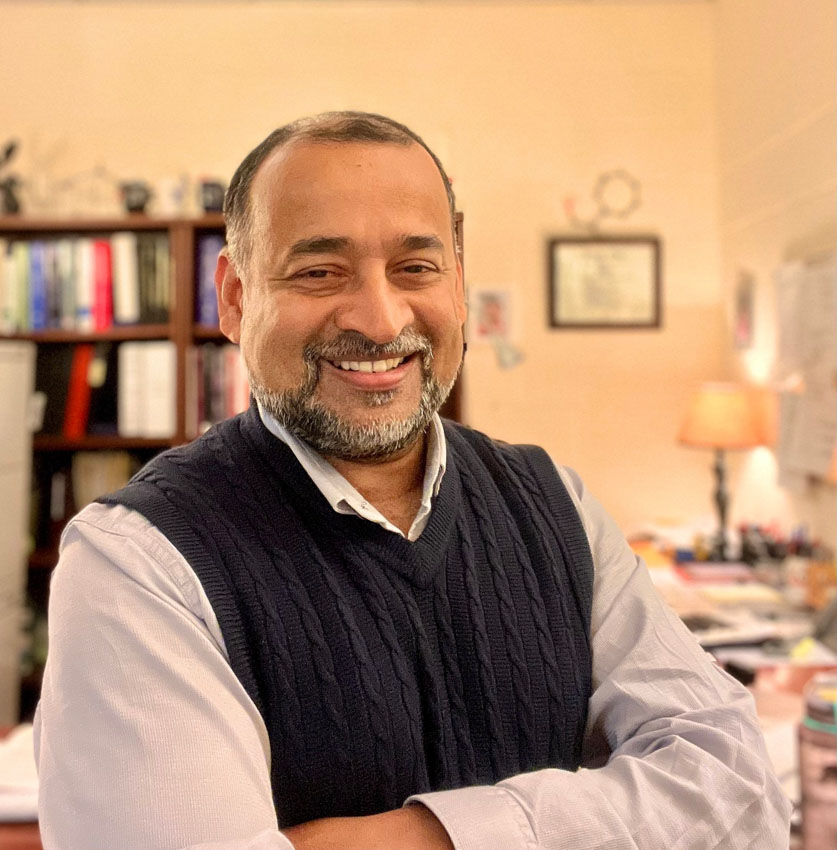Alzheimer’s Awareness Month: USM Professor Continues Promising Research
Thu, 11/09/2023 - 10:33am | By: Van Arnold

The toll that Alzheimer’s Disease takes on its victims and their families is practically immeasurable. Statistics show that approximately 6.5 million people in the United States age 65 and older live with Alzheimer’s disease – a brain disorder that grows worse over time.
While November has been designated as Alzheimer’s Awareness Month, researchers like University of Southern Mississippi (USM) Professor Dr. Vijay Rangachari continue a daily quest to unlock pathways that might someday lead to a cure.
Rangachari, Professor of Biophysical Chemistry, has been working on Alzheimer’s disease and related neurodegenerative diseases since 2004 during his post-doctoral days at the Mayo Clinic in Jacksonville, Fla. He joined the USM faculty in 2008.
Rangachari’s research targets a class of proteins called “intrinsically disordered proteins,” which lack an ordered structure and remain as ensembles of many disordered states.
“Several such proteins are also involved in ‘clumping’ also termed as aggregation,” said Rangachari. “Such aggregates, commonly called “amyloids” are often found deposited in the brains of neurodegenerative disease patients. In Alzheimer’s disease, two proteins named amyloid-beta and tau form inclusions in the brain and are responsible for the loss of neuronal cells in patients which manifests as cognitive decline and memory dysfunction. My lab is focused on the protein amyloid-beta and understanding the molecular mechanisms by which it forms these toxic clumps.”
Alzheimer’s disease is characterized by changes in the brain partly due to deposits of amyloid-beta proteins. Alzheimer's disease causes the brain cells to die and to eventually shrink. Alzheimer's is the most common cause of dementia — a gradual decline in memory, thinking, behavior and social skills. These changes affect a person's ability to function. Of the approximately 55 million people worldwide with dementia, 60 to 70 percent are estimated to have Alzheimer's disease.
According to the Centers for Disease Control and Prevention, the number of people living with the disease doubles every five years beyond age 65. This number is projected to nearly triple to 14 million people by 2060.
In the past year, two FDA-approved drugs – lecanemab and donanemab – have shown promise in slowing down the decline in memory and thinking skills of people living with early Alzheimer’s disease.
Does that mean a cure for Alzheimer’s disease might be on the horizon? Rangachari explains that Alzheimer’s and other related neurodegenerative diseases are multifactorial, complex diseases that, unfortunately, have challenged the typical drug discovery process for more than three decades.
“However, significant progress has been made in understanding the biology of the disease, and I strongly believe we are on the cusp of cracking the therapy code,” he said. “We already have FDA-approved drugs in the form of immunotherapy and several other promising treatments are in the pipeline.”
Added Rangachari, “It is natural to question the research and drug targets when every drug fails to make a breakthrough, but we, as scientists, must stick to the fundamentals to unearth the cellular and molecular events such that they open better therapeutic avenues in the near future. I am sure we are going to see benefits of this very soon.”